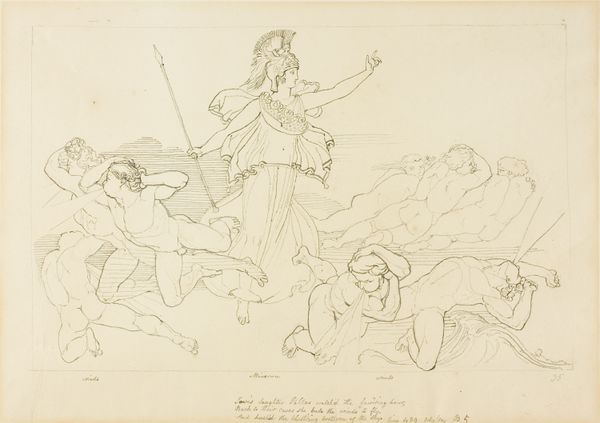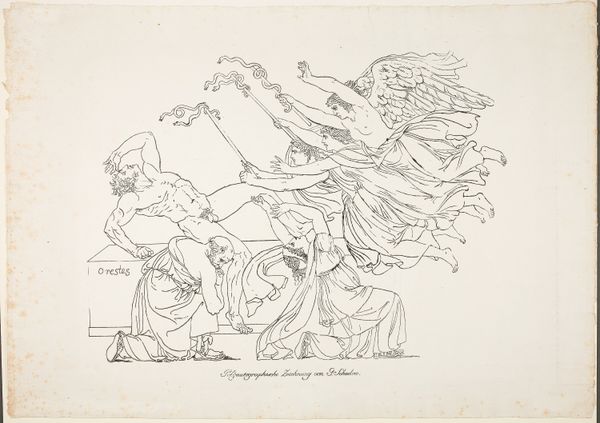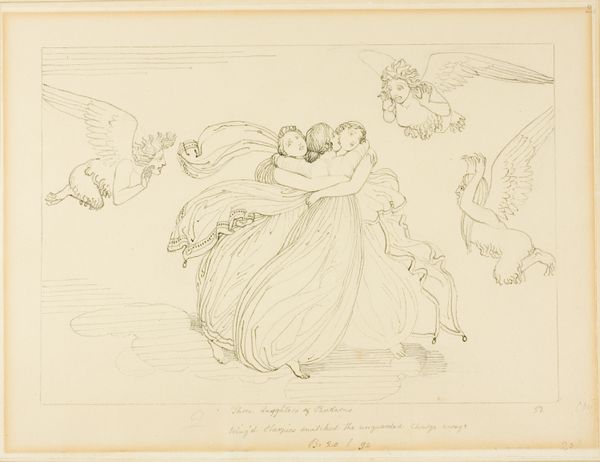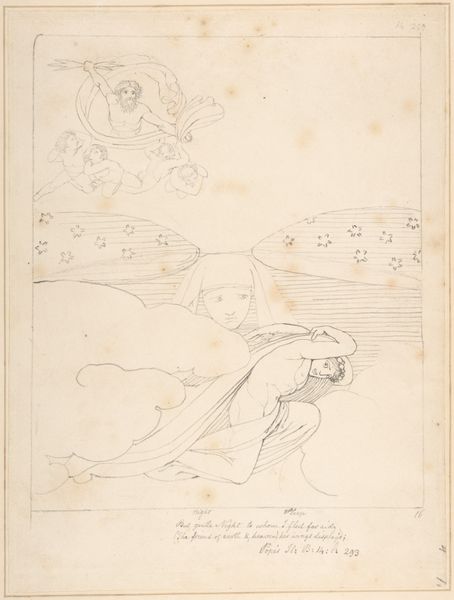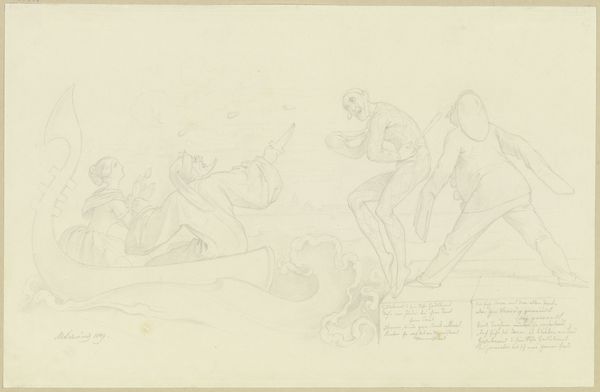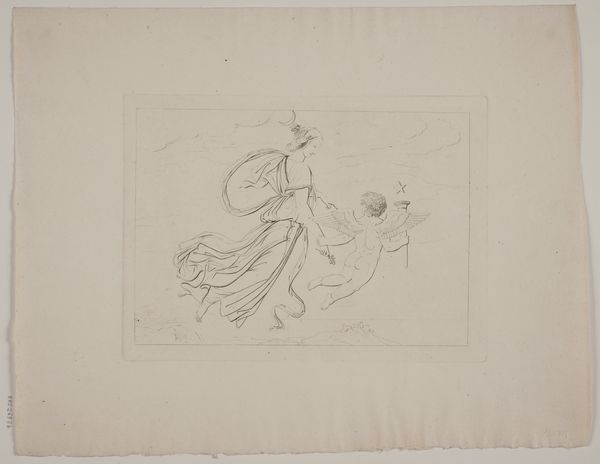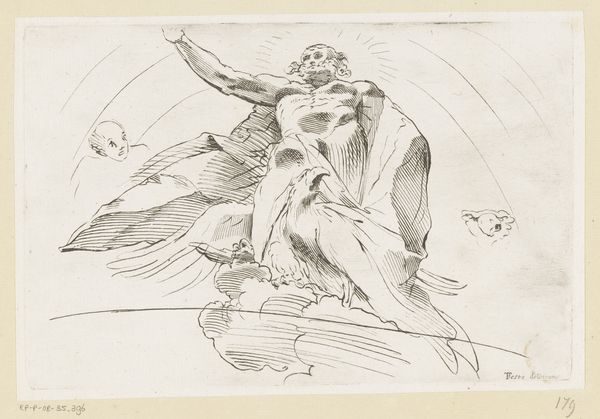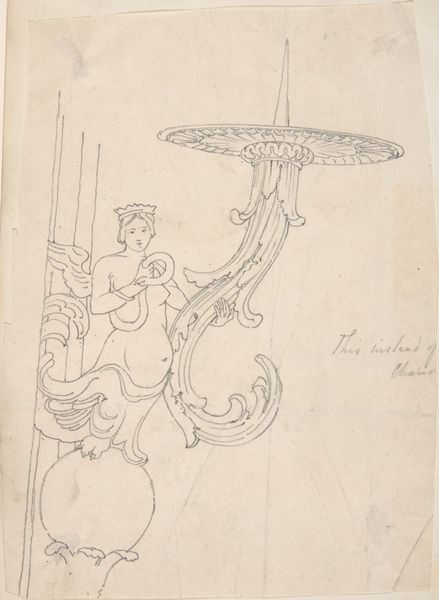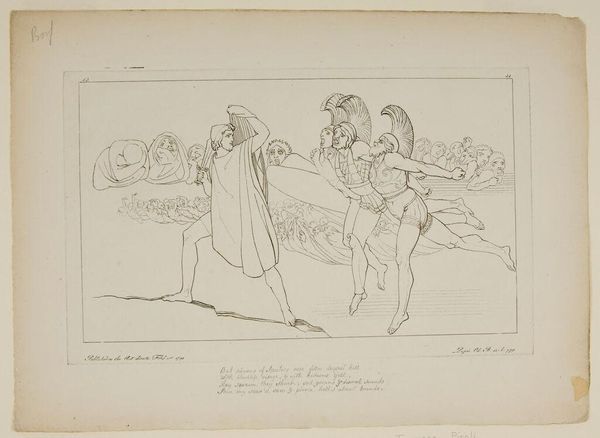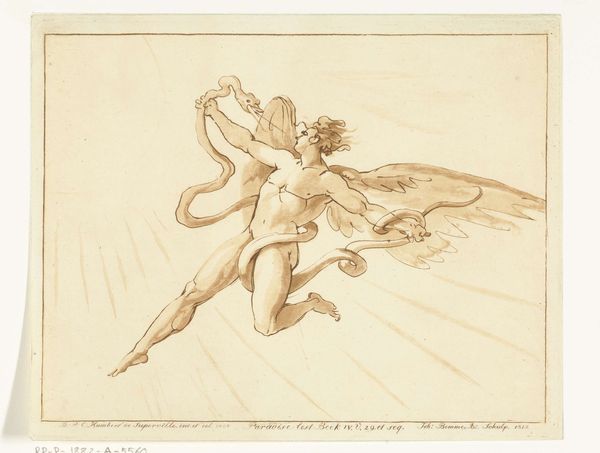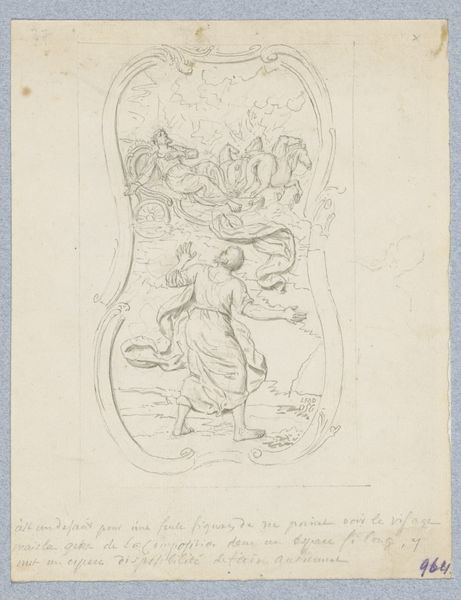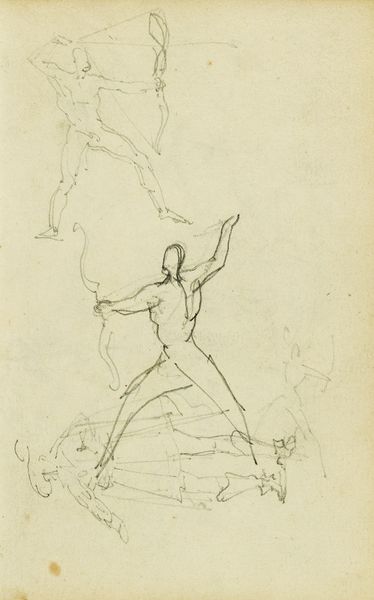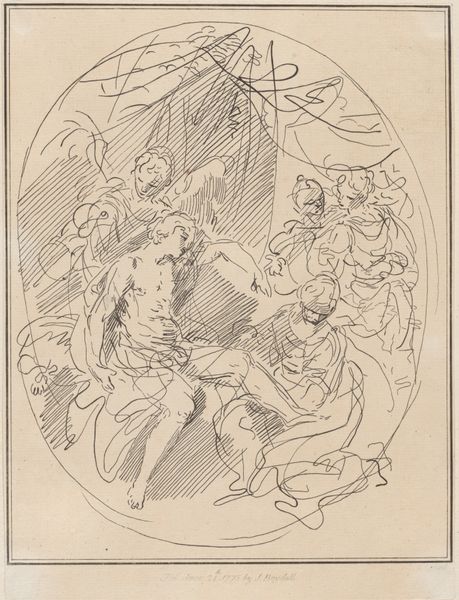
drawing, print, etching, paper, ink, graphite, pen
#
drawing
#
neoclacissism
#
ink drawing
# print
#
etching
#
pencil sketch
#
greek-and-roman-art
#
landscape
#
classical-realism
#
etching
#
figuration
#
paper
#
ink
#
line
#
graphite
#
pen
#
history-painting
Dimensions: 214 × 289 mm
Copyright: Public Domain
Editor: This drawing is titled "Apollo and Diana," and is by John Flaxman. It looks like it's made with pen and ink, maybe around the late 18th or early 19th century? There's such a serene, almost weightless quality to it. What captures your attention when you look at this piece? Curator: The linear purity is immediately striking, isn’t it? Flaxman’s interest lay in stripping away the baroque excesses and returning to what he saw as a more "authentic" classicism, rooted in line. Look at how he's depicted Apollo and Diana. How does their imagery speak to you? Editor: Well, Apollo, being the god of light and reason, is often associated with the sun and enlightenment ideals. Diana is more elusive - representing the hunt and wilderness, something ancient. Curator: Precisely! Consider then, the cultural memory embedded in these figures. The Greeks associated Apollo with civilization and order, principles embraced by the Enlightenment. Yet Diana retains a wilder, untamed aspect – a connection to pre-Olympian deities, perhaps. That tension fascinates me. It's about power of imagery. Does Flaxman resolve that tension here, or does he maintain it? Editor: I think he leaves it unresolved. They are together but represent very different energies, light and darkness. Their gestures seem almost independent. Curator: An excellent point. Flaxman, like many Neoclassical artists, wrestled with reconciling reason and passion. This drawing embodies that struggle, preserving both Apollonian intellect and the more primal, lunar forces. The ancient world had many meanings in his time. This new interpretation carries with it a history that shapes our present and perhaps even our future interpretations. What is most fascinating to you? Editor: Thinking about the social and cultural context, it makes this drawing much more profound than just a classical depiction of Greek gods. Thanks. Curator: Agreed. These images carry cultural memory. Flaxman lets it resurface with striking elegance and intensity.
Comments
No comments
Be the first to comment and join the conversation on the ultimate creative platform.
